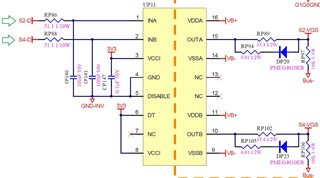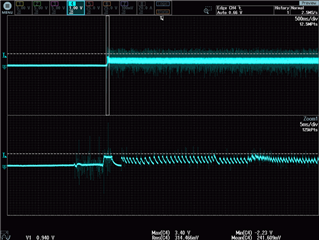Other Parts Discussed in Thread: UCC21530
Tool/software:
Team,
Since customer found that both INA and INB pin have some ripple noise during power-on, it could damage MOSFETs of the half-bridge. With this ripple voltage, the INA or INB pin would be possible act as HIGH level to lead to output is switching.
Question: Customer asked if there is a 10K-Ohm resistor connected in parallel from INA/INB to GND pin as a pull-down resistor for better noise immunity (not verify yet). Is there any side effect or risk? Very thanks.


GPIO21 (S2-D, INA)
f
Issue: MOSFETs are shorted thought together. Customer is still doing investigation for the root cause now.
Application: 1-phase String Inverter


